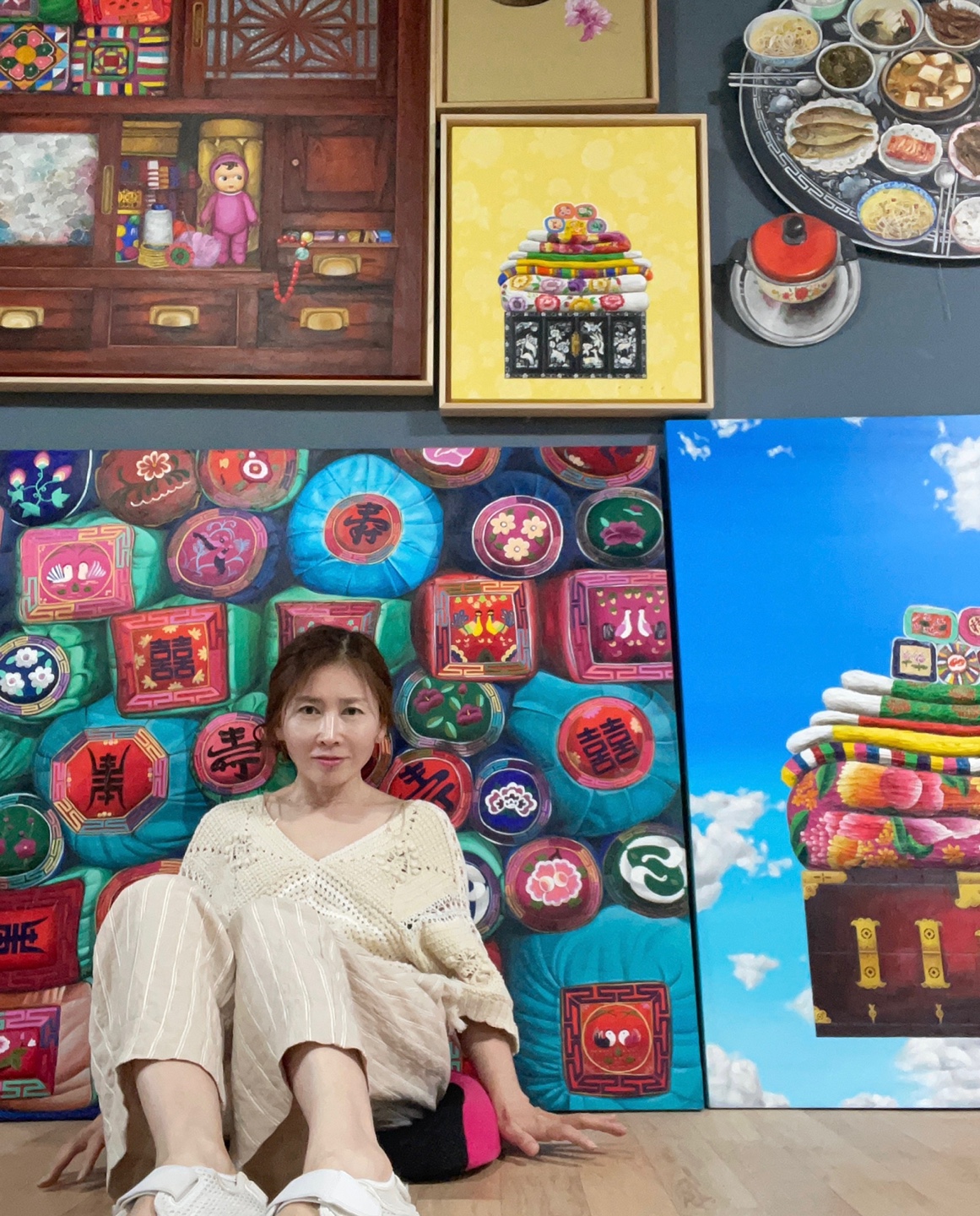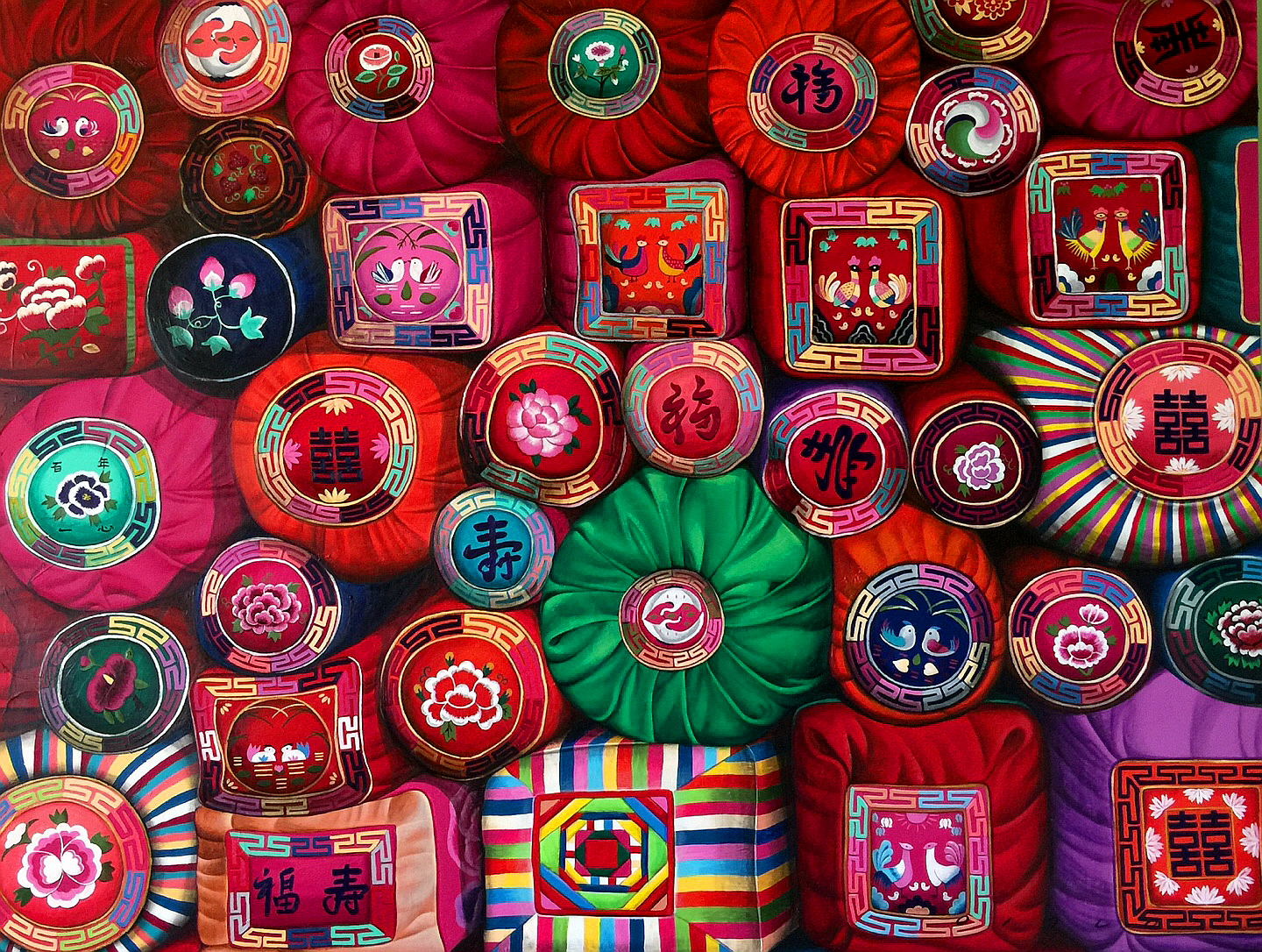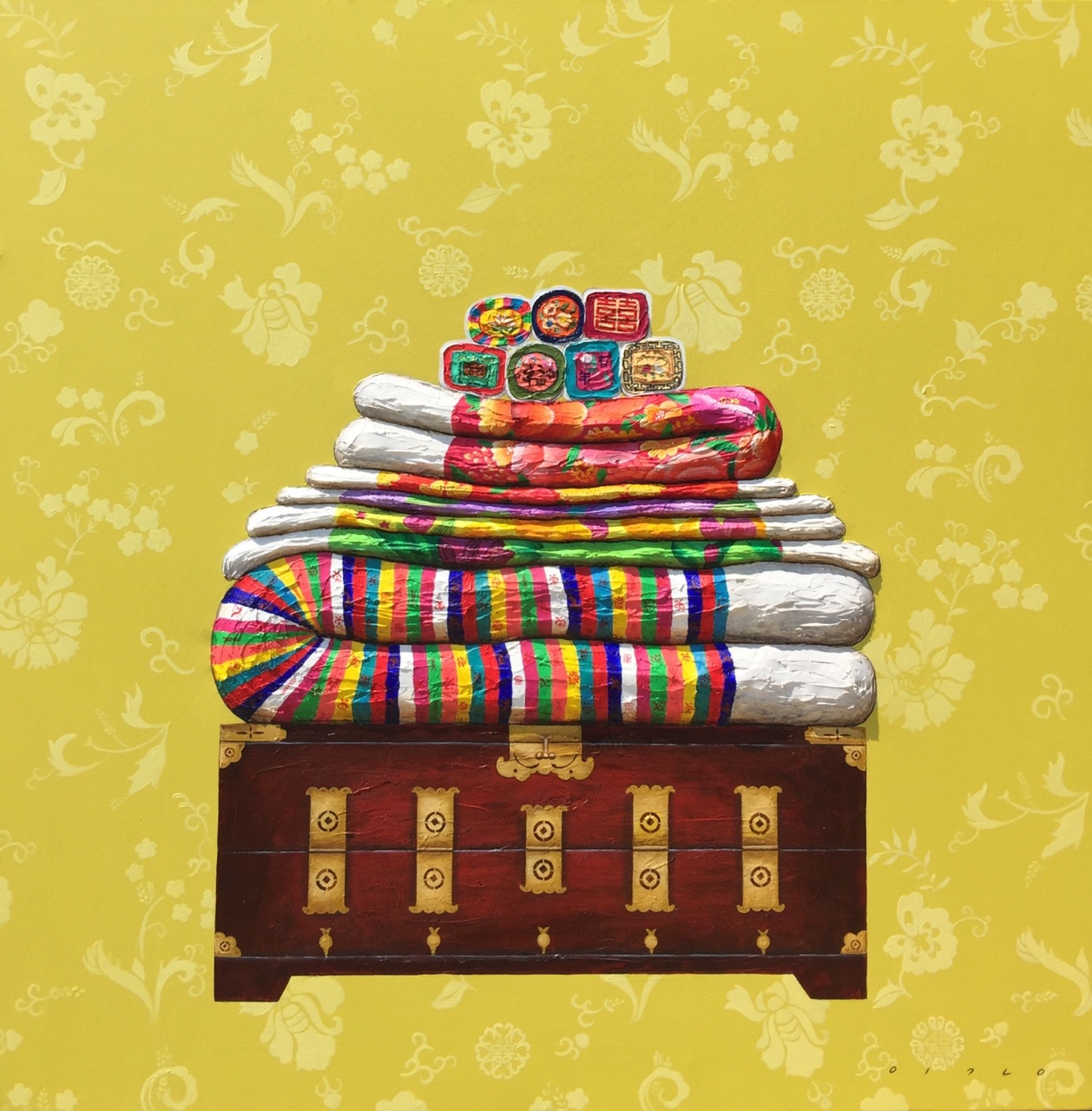- 한국어
- English
- 日本語
- 中文
- العربية
- Español
- Français
- Deutsch
- Pусский
- Tiếng Việt
- Indonesian
By Honorary Reporter Alexandra Kyriazi from Greece
Photos = Lee Kang
White, black, blue, yellow and red are the colors that comprise obangsaek, the traditional five-color spectrum of Korea. Each color represents a direction and element: blue for east and wood; red for south and fire; yellow for center and earth; white for west and metal; and black for north and water. In the past, the five colors and a balance between them were considered a necessity for a good and healthy life.
Obangsaek was seen in many activities and crafts in traditional Korean culture and society, from traditional crafts and clothing, decoration patterns and architecture to musical instruments, flags and even cooking.
Because of my keen interest in this cultural heritage, I interviewed via email on June 22 artist Lee Kang, who uses obangsaek in her art. The following are excerpts from the interview.

Artist Lee Kang often uses the five colors of obangsaek in her works.
What has inspired your works?
My art is mostly inspired by the things I used to see as a child at my grandmother's house. She had few toys and dolls I could play with, and most of the colors there were like old and faded. But her colorful blankets there caught my eye. For example, a satin blanket was shiny like a jewel and had different colors every time.

This collection of pillows by Lee was released last year.
When did you begin creating your works?
When my grandmother died, I didn't know what to do because of depression. One day, I drove thoughtlessly to her house, and seeing the closet, kitchen shelves, soil wall, display case and other items energized me. At that moment, I knew what direction my works would go.
What is your favorite among your works?
My favorite is the picture "A Blanket." This work put me on the art map and is my most popular work. This fancy blanket is like my grandmother's jewelry box as it was the only luxury item in difficult times when there were no accessories.

"A Blanket" is Lee Kang's personal favorite among her works and her most popular.
What projects do you plan to work on?
I want to publish a book of essays to promote deeper understanding of my art and present the first impression of materials through a child's eyes. I'll also keep on working on pillows, thimbles, quilted cloth and blankets. And I'm preparing for upcoming exhibitions in Seattle and Zurich, Switzerland.
enny0611@korea.kr
*This article is written by a Korea.net Honorary Reporter. Our group of Honorary Reporters are from all around the world, and they share with Korea.net their love and passion for all things Korean.